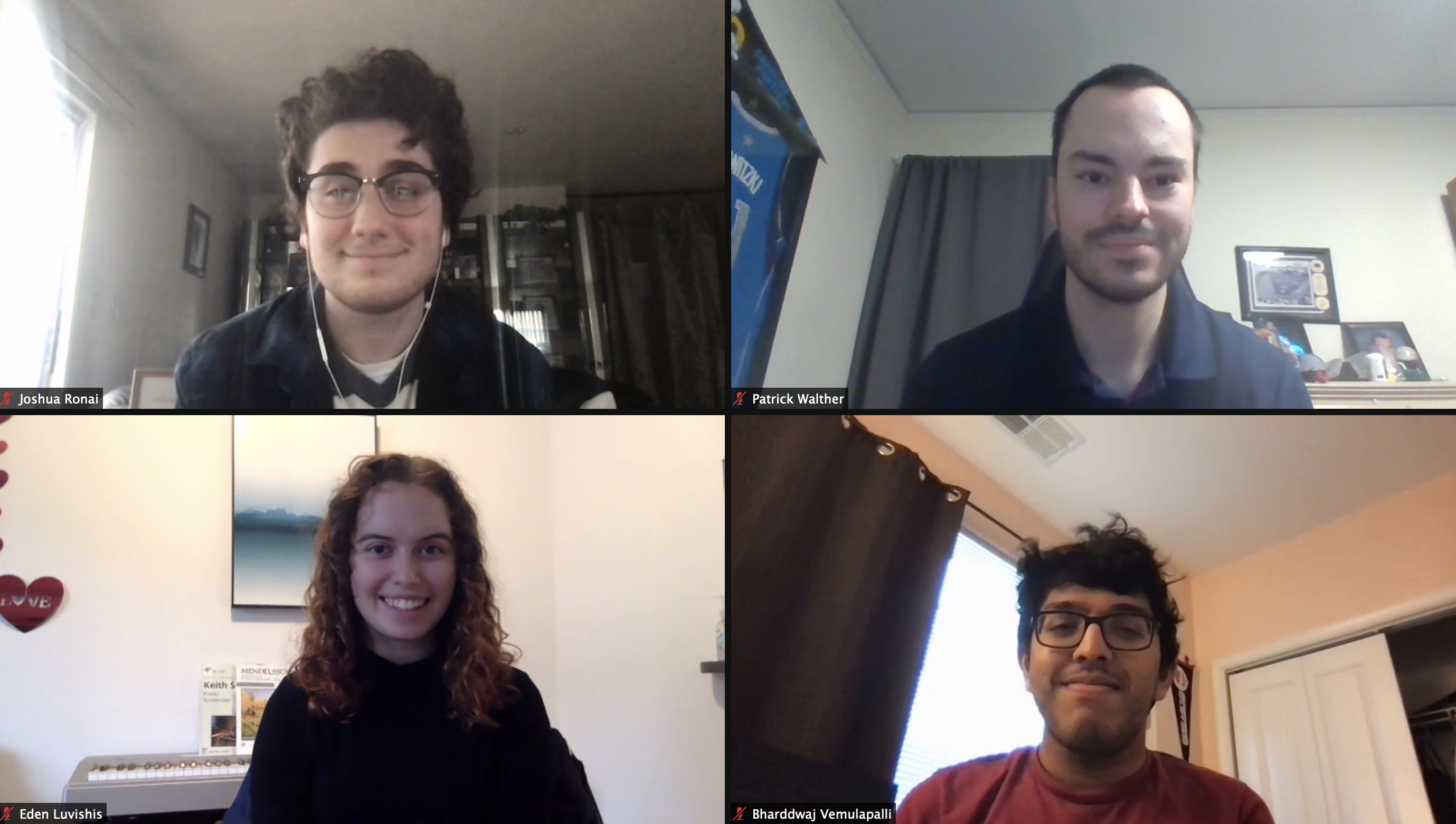Stevens students Eden Luvishis, Bharddwaj Vemulapalli, Joshua Ronai, and Patrick Walther were recently accepted to attend the National Conference of Undergraduate Research through their innovative research efforts this past summer, working under Dr. Ionut Florescu.

Their project, titled Financial Time Series Generation using Generative Adversarial Networks, provides a new way of modeling stock data.
Generative Adversarial Networks, or GANs for short, are a relatively new type of deep neural network. Eden, a second year quantitative finance student on the team, noted that their main interest is to use GANS in conjunction with financial markets and time series generation. “Historically, the stock market is very complicated and time series generation as a whole is very involved, as well. There are traditional, statistical methods such as ARIMA and GARCH that are used to generate time series, but they don't quite capture all the complexities of the stock market. What we were trying to do is apply a neural network, something more complicated and more robust, to time series generation.”
GANS provide a way of training a model using two smaller neural networks: a generator model and a discriminator model. The generator model is what is trained to generate new examples, and the discriminator model is what tries to classify examples as either “real” or “fake”.
Bharddwaj Vemulapalli, a third year quantitative finance major, explained how they were originally working with Professor Gary Engler (currently a Machine Learning expert at Facebook) to develop this idea. “Traditionally, GANs are used for very visual things like artwork, where you try to mimic a painting and try to pass it off as real. Professor Engler suggested that we try this on time series data and see what happens.”
Another team member, Joshua Ronai, explained how this would work if applied to a piece of art. “We would feed the discriminator a bunch of Monet paintings, and it would learn the difference between what is and isn't a painting. Then, we would attach it to a generator which, at the beginning, is going to make completely random looking paintings that look like an absolute mess. That data will be fed to the discriminator, and the discriminator will determine that the painting is ‘fake’. So the generator is going to learn slowly over time from the discriminator what looks like a Monet painting, and then the generator will eventually be able to make something so realistic that ultimately, the discriminator is only going to have a 50/50 chance of thinking whether it's real or fake.
In this scenario, the ultimate goal of a GAN is to basically have the discriminator “lose”, and have the generator be able to create a painting that looks like a genuine Monet, only to have it be generated by a computer completely on its own.
For this research project, they applied GANs to time series data. “We trained the network on stock data from IBM, and we fed that data into the discriminator so that it could see what IBM looks like over the course of a year. The generator will slowly learn what IBM stock data looks like over the course of a year, and generate modeled data until it will eventually look indistinguishable from real data,” Josh said.
After conducting the research, Eden received an email from the Pinnacle Scholars program, which often advertises different research opportunities and different conferences going on around the country. They got a notification about the National Conference of Undergraduate Research, which is the largest nationwide research symposium for undergraduate students. “This is a really unique conference, since research like this is usually conducted by graduate or PhD students,'' Eden said. “We submitted our research proposal, our abstract detailing our work, and our poster, and we were then accepted to attend.” The team attended the conference (originally supposed to be held in Washington DC) virtually on April 12th, and presented their research findings to conference participants (other universities, professors, and students). Click here to see their research abstract, methods, and results.